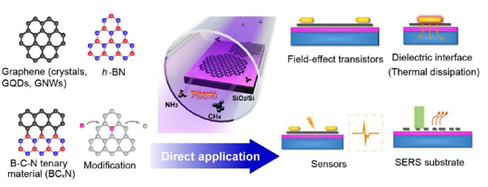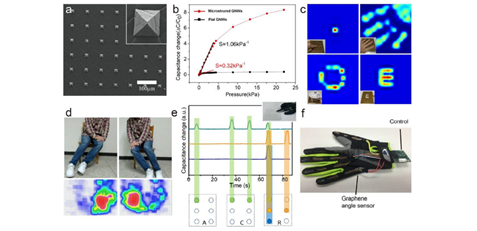 +565 975 658
+565 975 658
 info@premiumcoding.com
info@premiumcoding.com
 Monday - Friday, 8.00 - 20.00
Monday - Friday, 8.00 - 20.00
Since the rise of two-dimensional (2D) materials, synthetic methods including mechanical exfoliation, solution synthesis, and chemical vapor deposition (CVD) have been developed. Mechanical exfoliation prepares randomly shaped materials with small size. Solution synthesis introduces impurities that degrade the performances. CVD is the most successful one for low-cost scalable preparation. However, when it comes to practical applications, disadvantages such as high operating temperature (∼1000 °C), probable usage of metal catalysts, contamination, defects, and interstices introduced by postgrowth transfer are not negligible. These are the reasons why plasma-enhanced CVD (PECVD), a method that enables catalyst-free in situ preparation at low temperature, is imperatively desirable.
In this Account, we summarize our recent progress on controllable preparation of 2D materials by PECVD and their applications. We found that there was a competition between etching and nucleation and deposition in PECVD, making it highly controllable to obtain desired materials. Under different equilibrium states of the competition, various 2D materials with diverse morphologies and properties were prepared including pristine or nitrogen-doped graphene crystals, graphene quantum dots, graphene nanowalls, hexagonal boron nitride (h-BN), B–C–N ternary materials (BCxN), etc. We also used mild plasma to modify or treat 2D materials (e.g., WSe2) for desired properties.

Schematic illustration of the materials and the related applications

Prototypes for pressure sensors
This Account has summarized our progress on the PECVD growth of 2D materials and the related applications. Different mechanisms of PECVD, including c-E, q-E, n-E, temperature-dependent growth and mild etching for modification, enable noncatalytic transfer-free preparation of multiple 2D materials including graphene, GQDs, GNWs, h-BN, BCxN, and other modified species at low temperature in a controllable manner. The merits of PECVD are not only beneficial to cost-effective preparation of high-quality 2D materials with clean surfaces and interfaces but also essential to high performance in the applications. Although intensive attention has been paid to CVD recently owing to high quality of as-made 2D materials, the above-mentioned features of PECVD are highly desired when it comes to applications in the future. Until now, challenges and opportunities coexist, and PECVD still needs to move forward to become a comprehensive preparation methodology for future applications of 2D materials. Anyway, PECVD is one of the most promising methodologies to produce 2D materials with unique merits for various applications, and there is, we believe, a bright future for the PECVD preparation of 2D materials after further exploration.
The paper was published at 《Accounts of Chemical Research》 in February 3, 2021, Kongyang Yi is the first author, the paper links:
Kongyang Yi, Donghua Liu, Xiaosong Chen, Jun Yang, Dapeng Wei,* Yunqi Liu,* and Dacheng Wei*, Plasma-Enhanced Chemical Vapor Deposition of Two-Dimensional Materials for Applications, Accounts of Chemical Research 2021 54 (4), 1011-1022
Get to know us better now!

Wechat:FDUMMers
Search!
Search across our website
Revenant @ 2018 by fudan | All Rights Reserved
Powered by Weicheng

